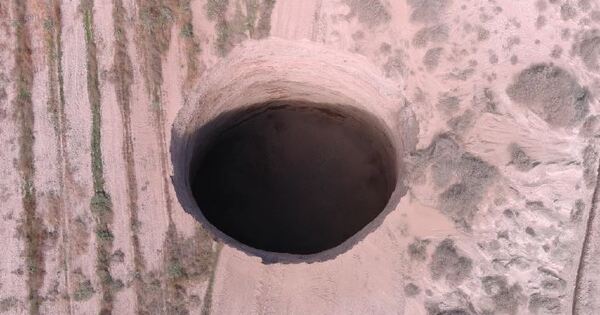Chilean authorities have ordered Lundin Mining to undertake comprehensive remediation of the Alcaparrosa sinkhole that appeared in the Atacama Desert last year, marking a significant development in one of the country’s most visible environmental incidents.
The National Geology and Mining Service (Sernageomin) has instructed the Canadian mining company to implement a detailed plan that includes filling the 36.5-meter-diameter sinkhole with rock, soil, and concrete, according to a resolution
...
Chilean authorities have ordered Lundin Mining to undertake comprehensive remediation of the Alcaparrosa sinkhole that appeared in the Atacama Desert last year, marking a significant development in one of the country’s most visible environmental incidents.
The National Geology and Mining Service (Sernageomin) has instructed the Canadian mining company to implement a detailed plan that includes filling the 36.5-meter-diameter sinkhole with rock, soil, and concrete, according to a resolution published by the agency. The order follows months of investigation into the massive crater that emerged near Lundin’s Minera Ojos del Salado operations in July 2022.
The sinkhole, which initially measured approximately 25 meters in diameter before expanding, appeared in an area about 600 meters from the nearest residence in the Tierra Amarilla community. Its sudden formation raised immediate concerns among local residents and environmental groups regarding mining safety practices in the region.
Sernageomin’s technical evaluation determined that the collapse was directly linked to mining activities at Lundin’s Alcaparrosa mine, which forms part of the company’s larger Candelaria copper-gold complex. Experts concluded that overextraction and improper backfilling of mining chambers contributed to the surface instability that resulted in the sinkhole’s formation.
“This is not simply about filling a hole, but about ensuring structural stability and preventing future incidents that could endanger nearby communities,” said a Sernageomin official who requested anonymity as they weren’t authorized to speak publicly about the resolution. “The remediation plan addresses both immediate safety concerns and long-term environmental considerations.”
The mandated remediation process will proceed in multiple phases, beginning with comprehensive geotechnical studies to ensure the area’s stability before backfilling operations commence. Authorities have stipulated that Lundin must use materials that will provide long-term structural integrity while preventing further environmental degradation.
Lundin Mining, which acquired the Candelaria complex in 2014 for $1.8 billion from Freeport-McMoRan, has already faced significant operational disruptions due to the incident. The company temporarily suspended operations at the Alcaparrosa mine following the sinkhole’s appearance, impacting overall production at the Candelaria complex, which typically produces approximately 180,000 tonnes of copper annually.
In a statement following the remediation order, Lundin Mining confirmed it would comply with regulatory requirements while emphasizing its commitment to operational safety and environmental responsibility. “We are working closely with authorities to implement the required measures and will continue to prioritize the well-being of local communities and the environment,” the company stated.
The incident has highlighted growing concerns about mining practices in Chile, the world’s largest copper producer. The country’s mining sector accounts for approximately 10% of its GDP and produces nearly 30% of global copper output. However, the industry faces increasing scrutiny regarding its environmental footprint and impact on local communities.
Mayor of Tierra Amarilla, Cristóbal Zuñiga, who has been vocal about mining impacts on the community, welcomed the remediation order but expressed concerns about longer-term implications. “While filling the sinkhole addresses an immediate danger, we need broader reforms to ensure mining companies operate with greater transparency and accountability toward the communities where they operate,” Zuñiga said.
Environmental experts note that the incident reflects broader challenges in Chile’s mining sector as companies push to maintain production levels amid declining ore grades and increasing operational depths. This has prompted questions about whether current regulatory frameworks sufficiently address the evolving nature of mining activities and their potential impacts.
The Alcaparrosa incident has already prompted calls for stricter monitoring of underground mining operations throughout Chile. Industry analysts suggest that enhanced regulation could increase operational costs for mining companies but might ultimately benefit the sector by improving safety standards and community relations.
For Lundin Mining, the remediation costs come at a challenging time for the copper industry, which has experienced price volatility amid global economic uncertainties. However, with copper demand projected to increase substantially due to electrification and renewable energy transitions, the long-term outlook for the metal remains positive.
The company has not disclosed the estimated cost of the remediation work, though mining experts suggest such projects typically run into millions of dollars depending on the complexity and scale of the required interventions.
Sernageomin officials have indicated they will closely monitor the remediation process, with regular inspections scheduled to ensure compliance with the approved plan. The timeline for completion remains flexible, contingent upon safety assessments during each phase of the operation.


